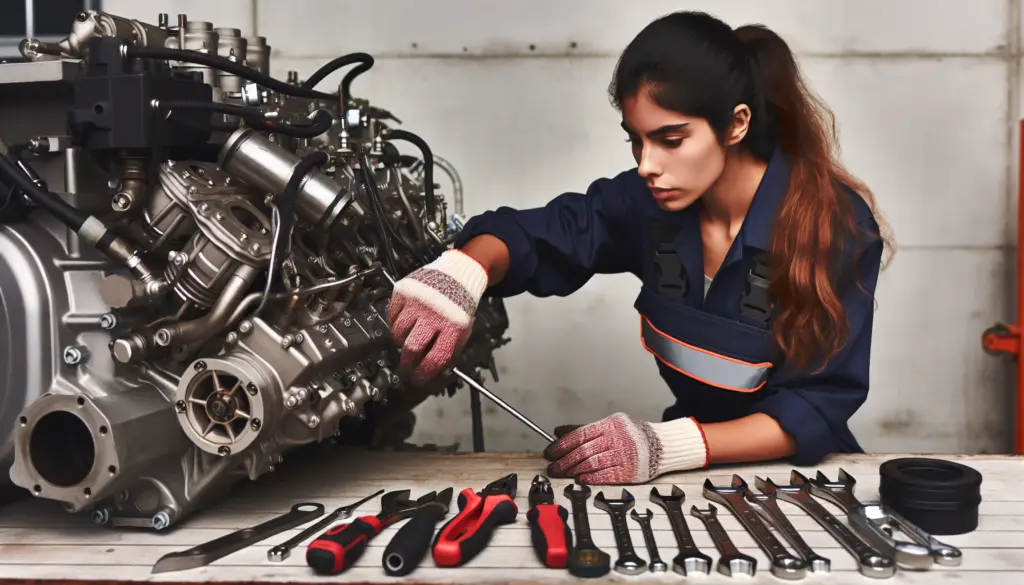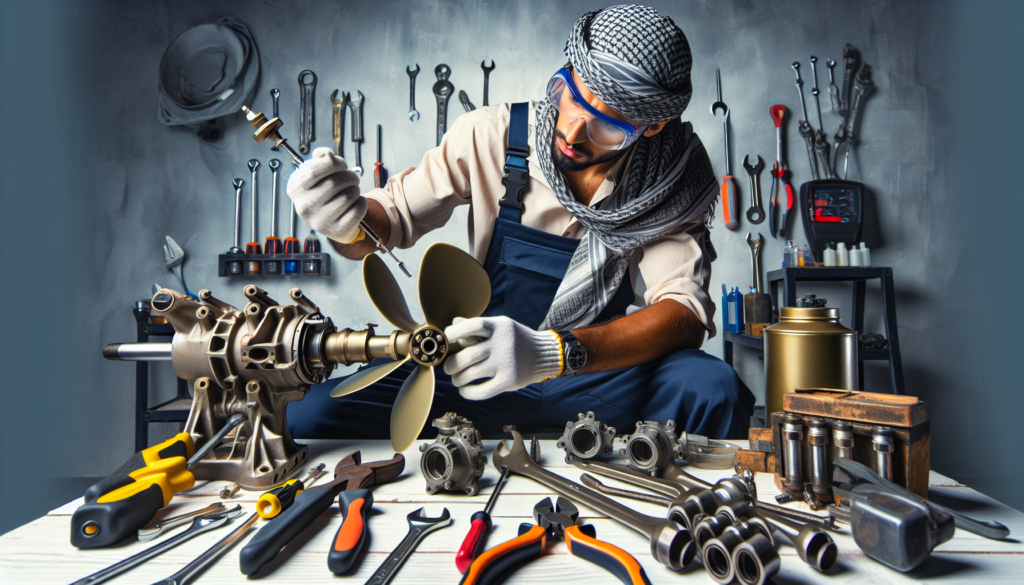As boat season kicks in with the arrival of spring, it is essential to ensure that your boat engine is in top-notch condition. This article discusses the epitome of spring boat engine maintenance practices, offering you an insight into how you can improve your boat’s engine lifespan while reducing potential engine breakdowns that could dampen your sailing experience. By the end of this read, maintaining your boat engine will no longer be a daunting task but rather an enjoyable boat owner routine experience. So, brace yourself to become an expert in keeping your boat engine running smoothly throughout this spring season.
Understanding your Boat Engine
The first step towards good maintenance is having a thorough understanding of your boat engine. This involves familiarizing yourself with the different types of boat engines and their basic parts, as well as understanding their functions.
Different types of Boat Engines
There are three main types of boat engines: Outboard, Inboard, and Sterndrive. Outboard engines are mounted on the outside of the boat and are often used for smaller watercraft. Inboard engines are located inside the boat’s hull, and they drive a fixed propeller shaft. Sterndrive, also known as inboard/outboard engines, combine features from both other types. They’re mounted inside the boat, but their drive shaft extends through the bottom of the hull.
Basic engine parts and their functions
A boat engine comprises several basic parts. The most foundational is the block—the large, metal housing that contains the cylinders where fuel combustion occurs. The cylinders are equipped with pistons that move up and down as the fuel burns, driving the crankshaft, which ultimately powers your boat. The fuel system, cooling system, and electrical system all contribute to this process. For instance, a functional cooling system ensures the engine doesn’t overheat, while the electrical system provides the spark for fuel ignition.
The Importance of Regular Boat Engine Maintenance
Regular boat engine maintenance is vital for several reasons.
Extending your boat engine’s lifespan
Regular engine checkups can help extend your boat engine’s operational life. By performing preventative maintenance, you can catch minor issues before they evolve into serious problems that could necessitate expensive repairs or even a complete engine replacement.
Preventing unexpected engine failures
Among the worst nightmares for boat owners is the unexpected engine failure while out on the water. Regular engine maintenance, including inspections, lubrication, and component replacements, can help prevent such occurrences and ensure safe, reliable functioning.
Improving overall boat performance
Regular maintenance ensures your boat engine operates at its optimal condition, leading to improved performance and fuel efficiency. This means you can enjoy smoother rides and reduced fuel costs.

Spring Cleaning your Boat Engine
Spring cleaning isn’t just for your house—it’s equally important for your boat engine.
Step-by-step cleaning procedure
Begin by clearing any debris from the engine. Next, remove parts like air filters and spark plugs for a thorough cleaning. Use a brush to clean dirty areas and an air compressor to blow out dust and grime. Spray engine degreaser on heavily soiled areas, let it soak, and then rinse with a garden hose.
Recommended cleaning agents
Use a marine safe degreaser for most cleaning tasks. For stubborn grime, you may also need a specialized cleaner. Always choose products that are approved for marine engines to avoid causing damage.
Removal and prevention of corrosive elements
Corrosion is a common problem, especially with saltwater boats. Regularly wash your engine with fresh water and apply a corrosion inhibitor to all metal parts. This can combat rust and keep your engine healthy for longer.
Checking Boat Engine Oil and Lubricants
Like any vehicle, your boat requires regular oil and lubricant checks.
Determining oil quality and level
Regularly checking the oil’s quality and level in your boat engine is crucial. If the oil is dirty or below the recommended level, it’s time for an oil change.
Recommended type of oil and lubricants
The type of oil or lubricant you need depends on your boat engine’s type and model. Always refer to your engine manual for the recommended oil type and viscosity rating.
Proper procedures for changing oil and lubricants
Changing the oil is straightforward; drain the old oil, replace the oil filter, and fill with new oil to the recommended level. For other lubricants, like gearbox or power steering fluid, check the levels and top up if necessary. Remember, never overfill and always dispose of old oil responsibly.

Inspecting and Maintaining the Cooling System
The cooling system plays a considerable role in the overall health of your boat engine.
Importance of maintaining a functional cooling system
A well-maintained cooling system prevents your engine from overheating, which can cause catastrophic damage. It also increases your engine’s efficiency and longevity.
Recognizing and resolving blocked water passages
With time, water passages in your boat’s engine can get blocked due to dirt and debris. Regular inspection helps spot such issues early. If blockages are found, you might need a professional mechanic to clean out and restore the flow.
Coolant checking and replacement method
Ensure your coolant is at the proper level and replace it as per the manufacturer’s guidelines. Regular coolant changes will assist in preventing rust and corrosion inside the cooling system.
Fuel System Checks and Maintenance
Keeping an eye on your boat’s fuel system is equally important.
Checking for leaks and blockages in fuel lines
Regularly inspect fuel lines for blockages or leaks. A blockage can starve the engine of fuel, resulting in poor performance or sudden shutdowns. Leaks, on the other hand, could lead to fuel wastage and pose fire hazards.
Draining and cleaning the fuel tank
Drain and clean the fuel tank periodically to prevent buildup of debris and water, which could contaminate your fuel supply and cause engine problems.
Replacing fuel filters
Fuel filters ensure only clean fuel reaches your engine. Over time, these filters can get clogged and needs to be replaced to maintain optimal engine performance.
Keeping the Battery in Optimal Condition
Regularly checking your boat battery is crucial for continued efficient operation.
Regular battery inspection for corrosion
Periodically inspect your battery for signs of corrosion or damage. This can prevent sudden battery failure which may leave you stranded.
Battery charging and replacement practice
Regularly charge your boat battery to keep it running optimally. Also, batteries have a limited lifespan and should be replaced as per the manufacturer’s guidelines.
Safe battery cleaning method
If you discover corrosion on your boat battery’s terminals, you can clean it off with a mixture of baking soda and water, followed by a water rinse. Always disconnect the battery prior to cleaning to avoid any risks.
Examining and Servicing the Propeller
The propeller is an integral part of your boat engine, and its health directly affects your boat’s performance.
Checking the propeller for damage
A simple visual check will help identify any damage on the propeller such as nicks, dents or cracks. Damaged propellers can negatively impact your boat’s performance and fuel efficiency, and may even lead to other mechanical problems.
Securing loose propeller parts
While checking your propeller, ensure all parts are secured properly. Loose parts can lead to inefficiency and cause further damage.
Lubricating and replacing the propeller when necessary
Lubrication helps your propeller function smoothly by reducing friction. Also, if your propeller is damaged beyond repair, a replacement may be necessary. Always refer to your manufacturer’s guidelines for these tasks.
Re-checking the boat engine after winter storage
After winter storage, some crucial checks and maintenance are necessary to ensure your boat engine is ready for spring.
Inspecting the engine for winter damage
Thoroughly inspect your boat engine for signs of any damage that might have occurred during winter storage.
Re-starting the engine after winter
Starting a boat engine after a winter lay-up must be done with care. Be sure to oil the engine and allow it to run at idle for a while, observing for any abnormalities.
Preparing the engine for spring use
Inspect all systems, change the oil, and replace any degraded components. Consider professional servicing if needed.
Tips for Hiring Professional Boat Engine Maintenance Services
Sometimes, professional help is needed for complex services or when you lack the necessary equipment or skills.
Evaluating the credibility of service providers
Always do thorough research before choosing a professional service provider. Check for industry recognition and customer reviews to evaluate their reliability and reputation.
Determining the need for professional help
Professional help may be necessary for complex tasks such as engine overhauls, installation of new components, and tuning. If a problem persists despite your best efforts, consider hiring a professional.
Cost-effective ways to seek professional maintenance services
Getting professional services doesn’t mean going broke. Consider package deals or maintenance contracts, which can often be more cost-effective. Additionally, regular maintenance can help avoid expensive major repairs down the line.

